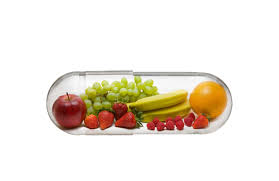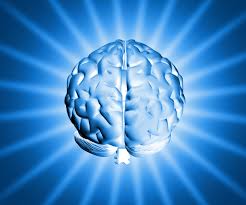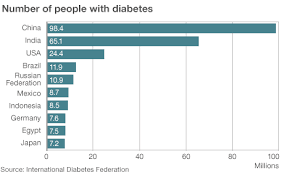Dietary supplements are products we consume, in addition to the food we eat. They do not replace our diet.They are not medicines.
Aging is a disease accelerated by vitamin deficiency and malnutrition. Nutritional supplementation in optimum levels is needed to ensure adequate levels for cells to carry out repair and rejuvenation processes.
Ideally, all nutrition should be obtained from our diet.
Pesticide and antibiotic-free organic whole foods are the best source of vitamins, minerals and most nutrients. For most of us, though, finding these quality food sources is easier said than done.Unfortunately, for most people, aggressively advertised high calorie, high glycemic, inflammation- and oxidative stress-causing unhealthy foodstuffs are cheap, plentiful and readily accessible, and that is what harried parents rely on for their family needs.
Farming usually takes place away from cities, where open land is available. So produce has to travel to cities. By the time it reaches grocery shelves, it’s already a couple of days old. And then it sits in our refrigerator bins for a few days, because of course we can’t shop daily. And then we take the veggies and cook, and cook, and cook some more, till all semblance of nutrition is destroyed.
Cooking methods don’t just lead to loss of nutrition, they sometimes create harmful chemicals, as in grilling and prolonged cooking at high heat.

Junk, supersized !

All processed food is devoid of nutrition and packs in unhealthy fats, colorants, preservatives, etc, etc.
Quantity of nutrients obtained from diet is inadequate.
Let us take the example of one of the nutrients we need, Vitamin E, which is a very important anti-oxidant. The optimum daily requirement for an adult is 800 IU per day. Almonds are a good dietary source of Vit E. 1 oz of almonds gives about 10 IU of Vit E. So each adult would need 80 oz, 2.4 kg almonds daily. What would be the caloric content of two and a half kilos of almonds? And the cost? Of course, this is grotesquely impossible.
During the days when we were hunter gatherers, our daily caloric intake was about 5000 calories. And the food was all organic, because pesticides hadn’t been invented. In those days it was possible to obtain all nutrition, and good quality nutrition, from food. But now times have changed.
So its quite clear that we need supplements.
In fact WHO, the World Health Organisation, recommends all adults take a multivitamin supplement daily. The medical recommendation, however, goes a lot further.
Waiting to supplement till symptoms appear, might be fatal. In 50% of heart attacks , the first symptom is sudden death.
What kind of Supplements?
FDA provides poor regulation of Dietary Supplements. Fringe hucksters and quacks abound. Therefore, all supplements are not created equal. A supplement obtained from synthetic sources contains free radicals and will itself cause damage to the body. So opt for supplements derived from natural, organic sources, obtained from responsible and quality conscious manufacturers.
What Supplements
1. A good quality, general purpose, multivitamin multimineral supplement.
A daily intake of a good multivitamin supplement can help in improving physical and mental health. It helps to improve general bodily functions and promotes overall well being. Pregnant women are advised by doctors to take multivitamins to ensure that there is sufficient nutrition for the mother and the unborn baby. It is true that a good multivitamin benefits your optimal health by helping promote your strong immune system, providing support for defense against a growing number of health concerns.
Assuming you’re taking a brand that provides ideal amounts of the various vitamins and minerals it contains (and not overly huge megadoses), and it contains the right vitamins/minerals for your specific needs, then a daily multivitamin is probably one the safest supplements there is. There are no research proven side effects when used in this manner.
I mean… hello… it’s a multivitamin. It contains the vitamins and minerals the human body is MEANT to consume each day for optimal health and function.
And if your brand provides vitamins from a natural, organic source, then it contains phytonutrients from plants, which give additional antioxidant benefits and help prevent many lifestyle diseases.

Do not opt for synthetic forms. Some may in fact, negatively impact your health and they should be flushed down the toilet.
You see, isolated vitamins are partial vitamins, combined with other chemicals. They’re a low-end alternative to whole, real complete food.
There are four problems with synthetic vitamins…
- Nature intended for you to consume food in WHOLE form because all the vitamins, minerals, antioxidants and enzymes are together in one package. They work synergistically to give your body the nutrition it requires for optimal health.
- Your body only absorbs a small percentage of an isolate form of vitamins and minerals – and it utilizes even less. You get the best bioavailability in whole food form.
- Synthetic vitamins often give you massive quantities of some nutrients (usually the most inexpensive ones) and insufficient quantities of others, not balance.
- You can experience side effects of synthetic isolates from the additives and the unnatural state of the synthetic supplement.
You want to be sure your multivitamin benefits you and has a real and significant contribution to your health, especially if you’ve already adopted healthy lifestyle practices.
2. Omega 3 fatty acids.
Benefits of Omega 3 – where do I even begin, and how do I get myself to stop? This one is by far my favorite supplement. If you take just the one supplement, let it be this one. The benefits are too numerous to list in detail. Just take it, and give it to everyone in the family, kids included and especially pregnant and lactating mothers.
- Brain – this is brain food. Proper function of our nervous system – including our brain – depends on the presence of DHA. DHA is particularly important to brain function. Our brain is 60% fat by weight, and DHA makes up an average of 15 to 20% of all fat in our brain. If we tie these two facts together, we arrive at the following conclusion: DHA accounts for 9-12% of our brain’s total weight! Drops in brain DHA levels are known to associate with cognitive impairment or slower neurological development in children. Nervous system deficiencies of DHA have been associated with a wide variety of problems, including neurodegenerative diseases like Parkinson’s disease; cognitive problems including reasoning ability in children; and severity of multiple sclerosis.
It is useful in autism, Alzheimers, schizophrenia, depression, bipolar disorder, ADHD, and in infants and kids to improve attention span, alertness, intelligence. It has a beneficial effect on attention, behaviour and emotional problems of children.
It is brain food.


- It is useful for the eyes, hair, skin. Effective for ‘dry eyes’, helps in age related macular degeneration.
- Helps in Allergic Rhinitis.
- Asthma, Cystic Fibrosis, Pulmonary Hypertension, chronic obstructive pulmonary disorder, pneumonia.
- Heart.
Omega 3 fatty acids help reduce the risk of heart attacks, high blood pressure. arrythmias, coronary vascular disease, ischemic stroke, peripheral vascular disease. Reduce incidence of sudden cardiac death. Improve cholesterol profile, lowering total cholesterol and raising good cholesterol. I recommend omega 3 as first choice instead of statin drugs, except in patients who have had a heart attack or have ischemic heart disease. Help reduce high blood pressure, lowers triglycerides. Slows plaque growth. Reduced blood clotting leading to heart attacks.
- Arthritis of any origin. Inflammation of any kind. Anything ending in -itis. Autoimmune disorders like Systemic Lupus Erythematosus and Psoriasis. Inflammatory bowel disease.

It prevents and reverses insulin resistance. Helps in fatty liver, in improving blood vessel function. In a study, administration of EPA (1800 mg/day for 48 weeks) to patients with type 2 diabetes resulted in significant beneficial effects on diabetic neuropathy and serum lipids as well as other diabetic complications such as nephropathy and macroangiopathy. EPA-E was found to improve coldness, numbness, the vibration perception threshold sense of the lower extremities, and significantly decrease serum triglycerides as well as excretion of albumin in urine.
- Helps in reducing Menstrual Pain.
- Cancer. Reduces risk of colon, rectum prostate and breast cancer.

The benefits of Omega-3 fatty acids are clear. To summarize recent research conclusions, Omega-3s…
- Promote the development of your baby’s heart and lungs.
- Support the development of your baby’s brain and eyes.
- Increase the learning and cognitive function of your child, with effects measurable to age four.
- Increase the attention span of your child ,a measurable component of intelligence early in life .
- Support the pregnancy health of the mother, possibly reducing chances of pre-eclampsia
- May help prevent pre-term labor and premature delivery.
- Helps prevent low birth weight.
As a Gynecologist, I recommend Omega 3 to all infertility patients, pregnant as well as lactating ladies. I have not had a low birth weight baby since I have started recommending Omega 3.
- Helps in Weight loss, and in increasing Bone Density.
How to obtain Omega 3 Essential Fatty Acids:
Vegetarian Sources : Walnuts, flaxseeds. These contain ALA, which is converted to the active Omega 3 – EPA and DHA. This conversion is partial, and that is why vegetarian sources, while helpful, are an inefficient way to obtain the daily dose of omega 3.

Fish such as herring,mackerel,salmon,sardines,sturgeon,lake trout, tuna are rich sources of omega 3. However, fish caught in coastal waters are likely to be contaminated with mercury, which can lead to heavy metal poisoning. So choose fish caught in deep cold waters. Also, oil obtained from the liver of the fish is more likely to be contaminated, as the liver’s job is to detoxify the body so it itself concentrates toxins. So eating fatty fish such as wild salmon thrice a week, or supplementation from a trusted source, is recommended.
3. Anti-Oxidants
The reason we do not enjoy the same good health as our grandparents did, is because we are exposed to pollution, pesticides, adulteration, chemicals, smoke, etc, etc. These contain a form of toxin called ‘free radicals’.
Free radical molecules are missing one or more electrons, so they aggressively attack other molecules in order to replace their missing parts. These reactions are called “oxidation” reactions. Oxidation is called “biological rusting” .
Free radicals steal electrons from the proteins in our body, which badly damages our DNA and other cell structures. They can create a “snowballing effect” – as molecules steal from one another, each one becomes a new free radical, leaving a trail of biological carnage. This damage, if it occurs in the cytoplasm, causes diseases like Diabetes, High Blood Pressure, Obesity, Cataracts, etc and if it occurs in the nucleus, can lead to cancer.
But all is not lost.
Nature has provided us with adequate defense mechanisms, in the form of ‘Anti-Oxidants’, which are primarily present in fruits and vegetables.
Antioxidants are electron donors. They can break the free radical chain reaction by sacrificing their own electrons to feed free radicals, but without turning into free radicals themselves.
Antioxidants are nature’s way of providing cells with adequate defense against attack by reactive oxygen species (ROS). As long as we have these important micronutrients, our body will be able to resist aging caused by everyday exposure to pollutants. If we don’t have an adequate supply of antioxidants to help squelch free radicals, then we can be at risk of oxidative stress, which leads to accelerated tissue and organ damage.
Antioxidants also help slow down the aging process.
They are of many different types and act on different tissues of the body, at various stages in the metabolic process.
Vitamin C
Dubbed the “grandfather” of the traditional antioxidants, vitamin C has a wide range of astonishing health benefits.
Vitamin C is also essential for collagen synthesis, which is an important structural component of bones, blood vessels, tendons, and ligaments.
We can get vitamin C from raw, organic vegetables and fruits, but we can also take it as a supplement. Personally, I am not fond of traditional vitamin C antioxidant supplements in the market, as they are not as bioavailable as they claim to be. When taking a vitamin C supplement, opt for one made from organic sources, which makes the nutrient more absorbable to your cells.
Vitamin C is water soluble and acts on the water containing parts of the body.
Vitamin E
Natural vitamin E is a family of eight different compounds: four tocopherols and four tocotrienols. You can obtain all these vitamin E compounds from a balanced diet composed of wholesome foods. However, if you take a synthetic vitamin E supplement, you will only get one of the eight compounds.
It is a fat soluble vitamin, and acts wherever fat is present in the body.
It is a very important vitamin for heart health, hardening of the arteries, high blood pressure, and cancer.
Carotenoids
Dietary carotenoids are a class of compounds which can be converted to vitamin A. They provide health benefits in decreasing the risk of disease, particularly certain cancers and eye disease. The carotenoids that have been most studied in this regard are beta-carotene, lycopene, lutein, and zeaxanthin. Lutein and zeaxanthin may be protective in eye disease because they absorb damaging blue light that enters the eye. Food sources of these compounds include a variety of fruits and vegetables, although the primary sources of lycopene are tomato and tomato products. Additionally, egg yolk is a highly bioavailable source of lutein and zeaxanthin.

In addition, there are many other anti-oxidants, such as green tea, which are highly effective and beneficial, and are generally used as required.
We are not helpless. We have the ability, the knowledge and the tools to keep ourselves healthy long into ‘old age’. So why not make a start today and live long, healthy, productive lives?

